I’ve recently experimented with a self-made bamboo pen after being reminded what nice lines it can create. Making your own reed pen or bamboo pen is easy, inexpensive and fun. In this post I’ll show you how you can make one and how to use it.
Here’s a video that shows you how to make the pen and a quick drawing demo:
The bamboo pen
I’ve had a reed pen since art school, and used it frequently during the days when I did type design and calligraphy, but I rarely used it for drawing. Just recently, I saw how artists use bamboo pens in two different places: in a book about van Gogh I saw he created a lot of drawings with self-made reed pens, and the illustrator Felix Scheinberger talks about it in his book about sketching how you can easily make one. So I got out my pocket knife and started looking for materials.
I didn’t find the right kind of reed growing anywhere around here, but I have bamboo sticks from the hardware store that I use for gardening. Bamboo is very strong, but has a hollow core, so it’s perfect for pen-making.
Although these pens are relatively easy to make, you should be careful, since you need sharp tools like a knife and drill.
How to make a bamboo pen
Cut a piece of bamboo to the length of a pen with garden shears. It should be relatively straight.
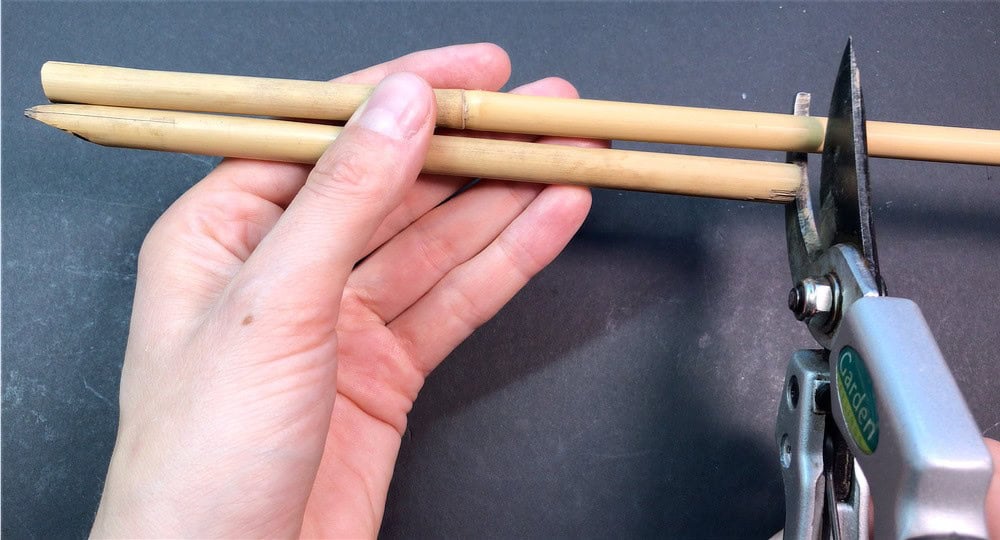
Next, use a sharp knife (be careful and only cut away from your body and fingers!) and cut the tip: cut away a diagonal section two thirds of the width of the stick, slightly curve it so that it comes to a point.
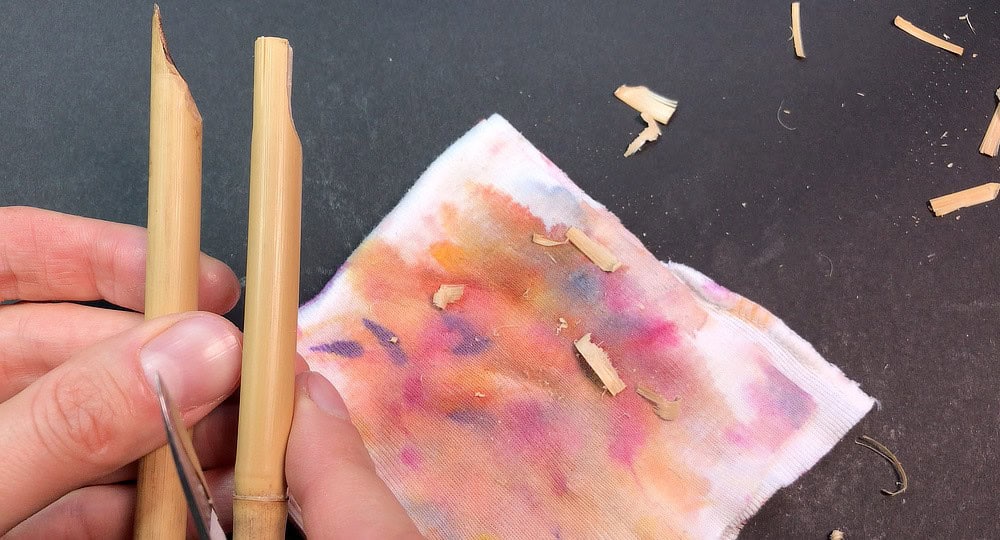
This step is optional: roughly where the tip ends, drill a small hole in the middle. This works as an ink reservoir. The pen will work without it, but carry less ink and distribute it less evenly.
Also create the slit by carefully placing your knife in the middle of the tip and push it down towards the centre. Don’t push the knife towards your body and protect your fingers!
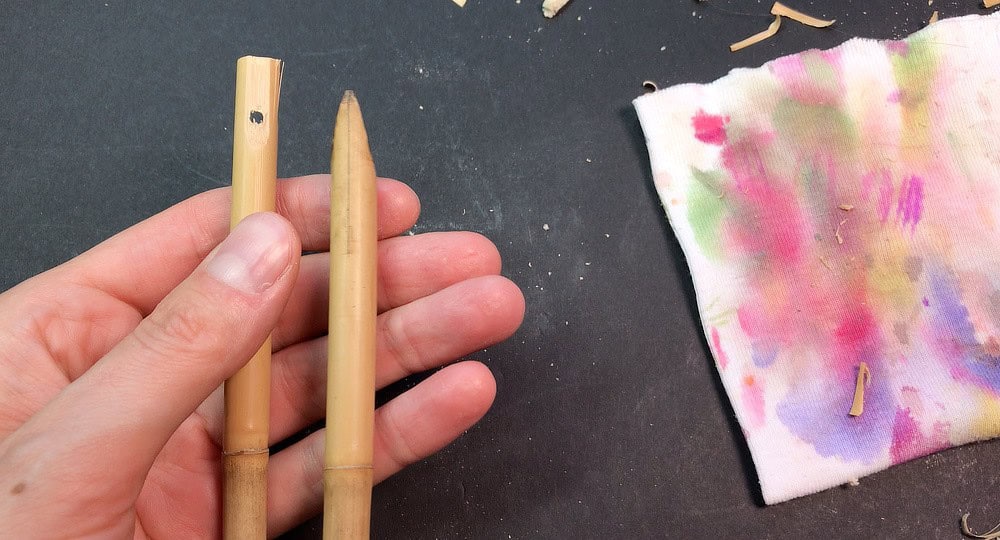
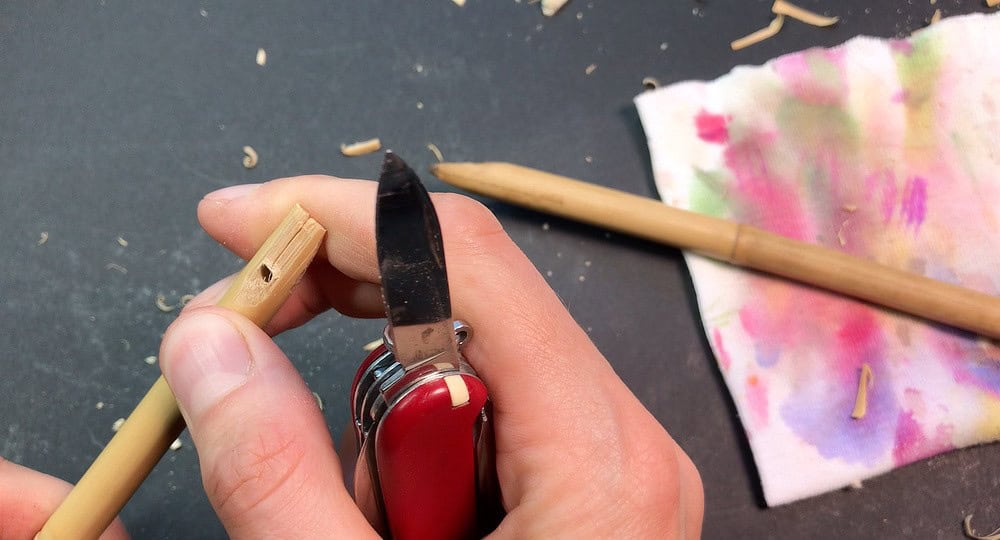
Then, thin down the tip by removing even more wood on the left and the right. The tip should come to a fine point. Cut off a bit of the point to make it ca. 1-2mm flat at the top (depending how broad you want your line to be). The two halves of the tip should be more or less symmtrical, with the slit in the middle.
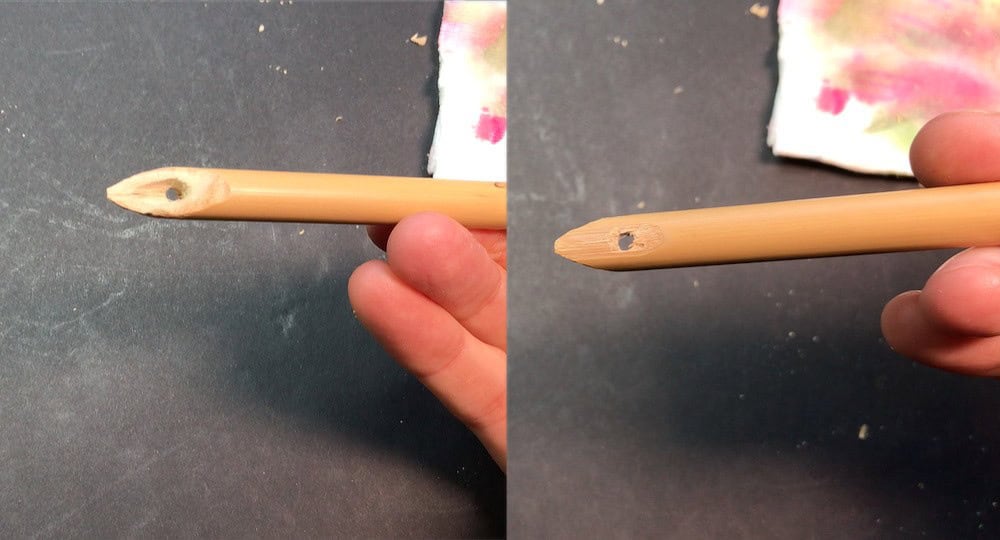
You can now test the pen. Dip it into ink, remove the excess ink and try drawing with it – lines, stipples, hatching – whatever comes to mind. It’ll give a very variable line, and the ink flow will also change over time. Turn the tip to get a different result. If the tip is too broad for you, simply remove a bit more wood with your knife.
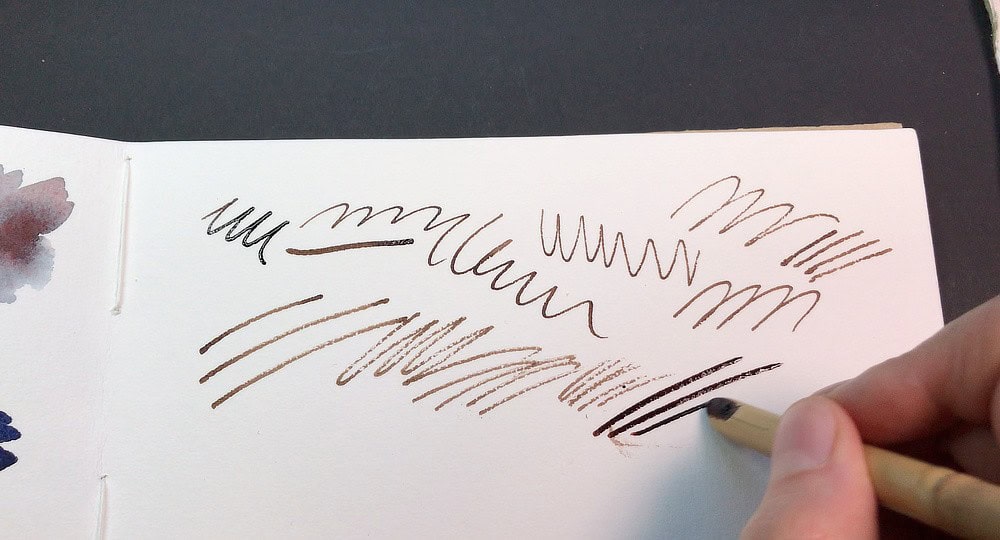
Bamboo pen sketches have something very dynamic and bold about them, I really like working with these pens. If you study van Goghs drawings, you will see he used his reed pens (which he also made himself) to great effect for his expressive drawings, and he combined the broad line work with a finer dip nib (probably a quill pen) for details.
Here are a few sketches I created with my bamboo pen. If you want to try these pens without having to make one yourself, they are also available pre-made from art supply stores.

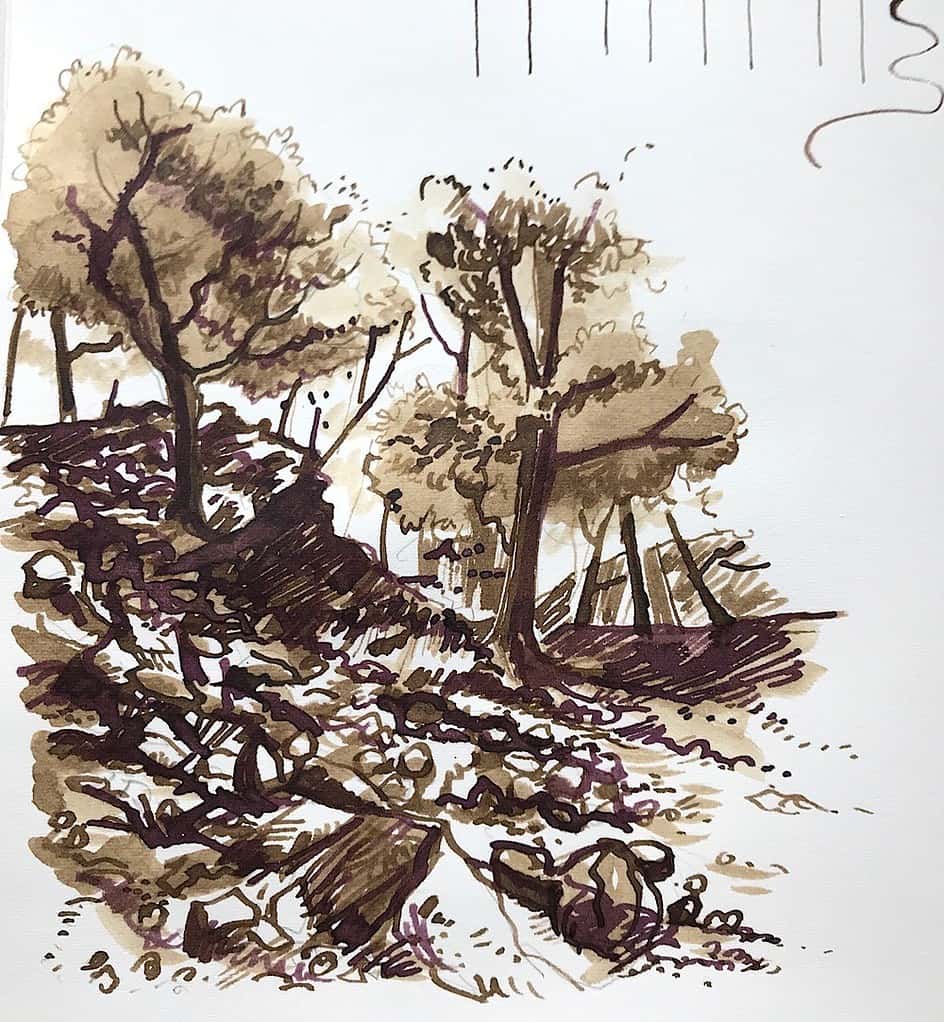

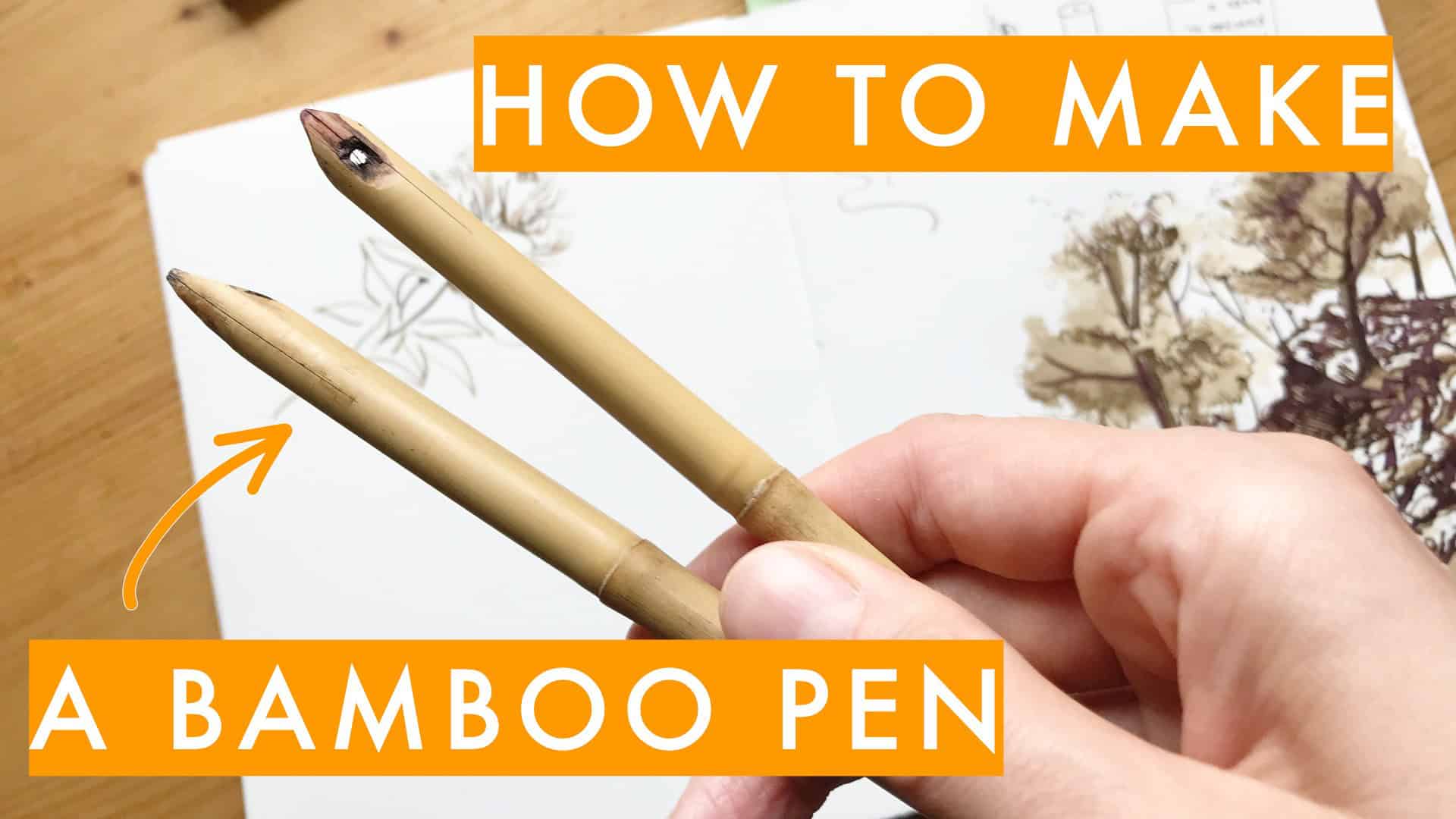

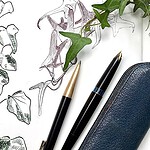
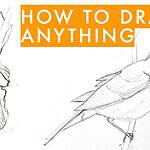
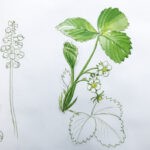
I love, love, love the expressive line of a bamboo pen, but haven’t used mine for quite a while, so with your reminder and your lovely drawings as examples I will now have to dig them out of my mountain of art supplies and enjoy using them once more. Thank you for jogging my memory. Happy sketching!
Yay, I hope you’ll find it! I too love the lines you can get out of these pens. 🙂
🙂 Thank you for the Bamboo Pen Process – On my list of things to do for the upcoming weekend!
Can I give you a tip on drilling? Rather than holding the section to be drilled off the board and drilling in the air – instead place a chunk of scrap wood under the pen like a cushion and drill into the pen and slightly into the wood. It will stabilize what you are doing – you won’t get the shake that you get when it is unsecured in the air, and it will reduce the likelihood of splintering.
Warm regards,
Leonie.
Great article. Thanks. I love simplicity + creativity.
Thank you Bruce!